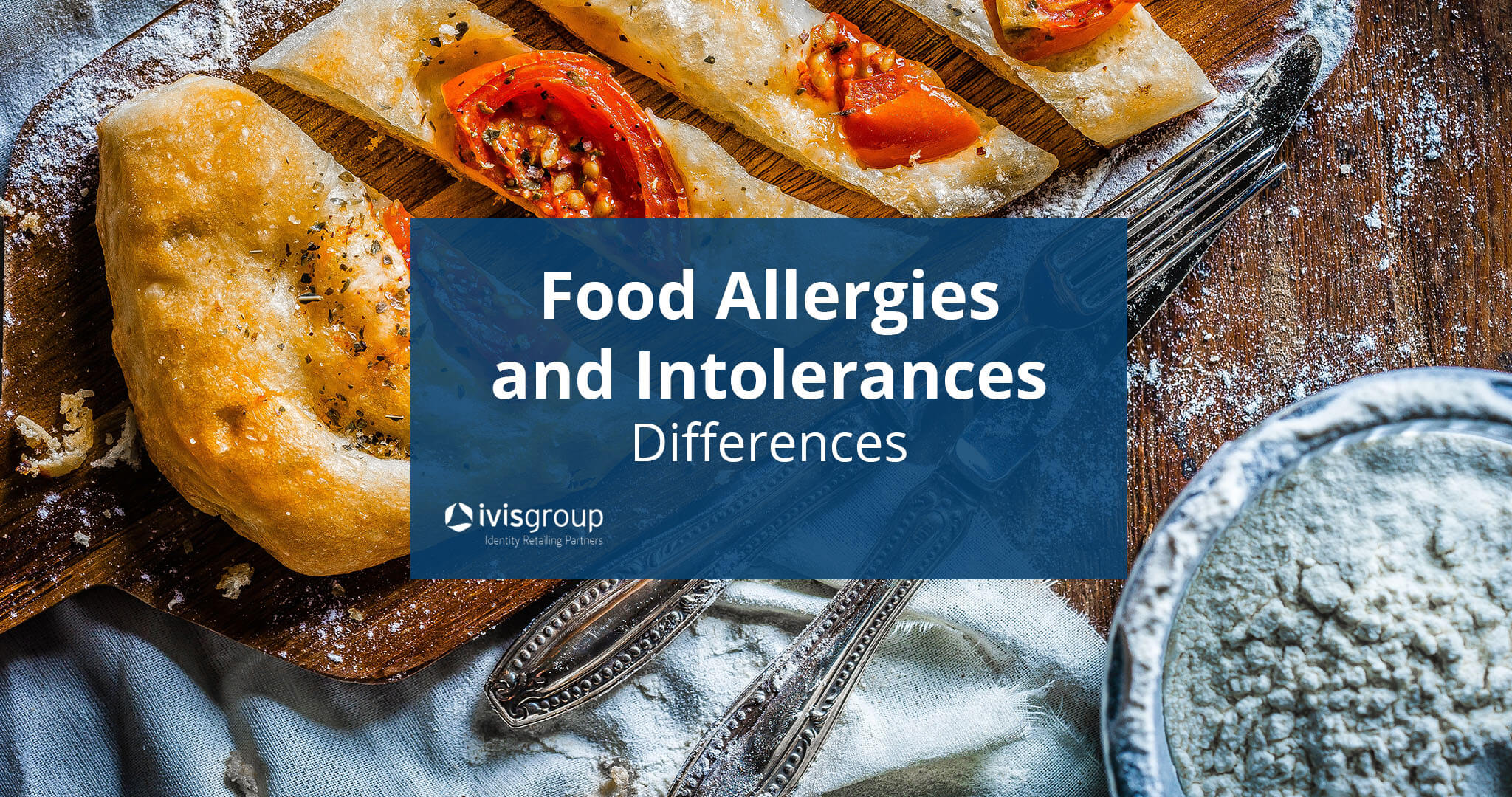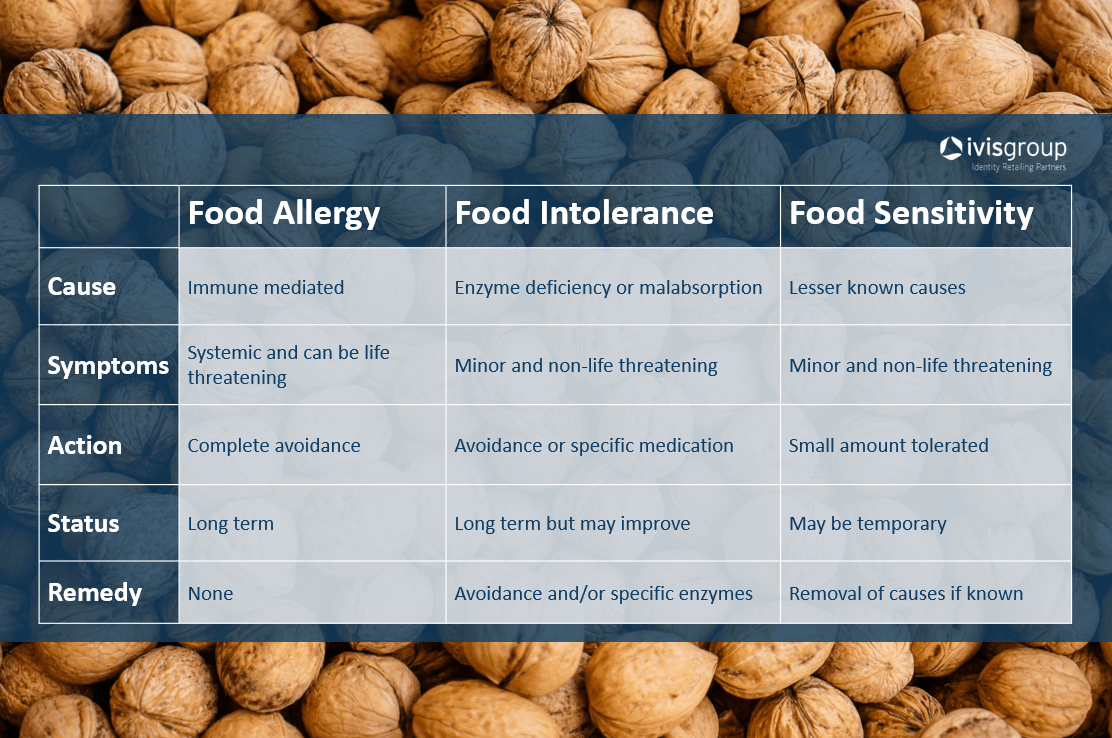Food allergies and intolerances: what is the difference?

Navigating through the various food reactions
As part of the “World Allergy Week” initiative promoted by the World Allergy Organization to raise awareness around all types of allergies, asthma and anaphylaxis (the most severe form of allergic reaction, which can be potentially life-threatening), it is key to understand how the various forms of food allergies affect our lives.
Food allergies are one of the most common causes of allergies and affect an estimated two million people in the UK (1-2% of the adult population and 5-8% of children). This number, however, does not take into consideration food intolerances, which may affect a much larger part of the population. Adverse reactions to foods can range from pretty mild symptoms to extreme responses and even death. There is still a widespread confusion regarding the difference between the various forms of food reactions – so it is worth explaining their differences. A table summarising the differences is available at the end of the article below.
Food Allergies
A real food allergy is “immune-mediated”, meaning that your immune system reacts badly to certain elements present in a food, normally the protein part (what we call a food allergen). Some examples would be individuals who react to the proteins in milk, egg or soya. These people can have a single allergy to a specific food or multiple allergies at the same time. The quantity of an allergen needed to trigger an immune response is very small so you can have an extreme reaction even to a trace amount.
You cannot rely on what happened during previous allergic episodes to foresee future response. In fact, you may in one incident have just a moderate skin flare after ingesting a food you are allergic to, and in another incident may experience a frightening anaphylactic reaction by ingesting exactly the same quantity! For this reason, if you have been diagnosed with a food allergy, you must always avoid completely the specific food/s and never assume you are going to be fine with a small amount.
The vast majority of food allergies are Ig-E mediated, which means the individual produces this class of antibodies against the protein present in the food. This kind of reaction, also named immediate hypersensitivity, can occur soon after ingestion or after a short period of time. The manifestations are usually systemic, meaning they may affect the entire body.
There are other rarer forms of food allergies, called non-IgE-mediated, which still involve the immune system but without the production of antibodies. In both cases, if you believe to suffer from a food allergy, you must undergo proper testing and receive a definitive diagnosis from a doctor. Just remember that the complete avoidance of the allergen is the only way to be safe so always read food labels and look for cross-contamination statement.
Food Intolerances
In contrast, food intolerances do not involve the immune system and do not pose a threat to life. The symptoms are usually much milder than those of a food allergy and affect mostly the gastro-intestinal (GI) tract (i.e., bloating, indigestion, diarrhoea etc.), although some not well-defined symptoms may be present, such as brain fog, headache and even anxiety and depression.
We do not experience food intolerances symptoms by ingesting trace amounts of a food, so there is no need to check for cross-contamination. However, the amount of food a person with an intolerance can handle before having an adverse reaction is quite individual. For instance, some people can react badly after few spoons of yogurt while others do not have symptoms unless they eat one pot or two!
The timing of the appearance of symptoms is also quite different, ranging from few minutes after ingestion to many days after. Food intolerances may be due to enzyme deficiency (like in lactose intolerance), malabsorption or complex mechanisms that we still do not properly understand. The food intolerances that are best known and studied (and the easiest to diagnose) are those due to enzymatic defects. In these cases, a person lacks the specific enzyme that breaks down a food component, like lactase that digests lactose (the sugar in milk) and so the undigested food is fermented by gut bacteria and brings about annoying symptoms, such as excessive gas, cramps etc.
Remember, food intolerances are not life threatening but if you feel you have problems in digesting certain foods, just ask for professional advice and do not exclude them without a valid reason!
Food Sensitivities
Finally, we should mention food sensitivities. There is no actual consensus on how to properly distinguish between intolerances and sensitivities and the two terms are often used interchangeably. However, in nutritional science we prefer to call food intolerances those reactions caused by enzymatic and malabsorptive issues (like the typical lactose, fructose or histamine intolerance) and sensitivities other less well-defined food reactions that can produce an array of symptoms but may be caused by a combination of factors.
For example, you may be sensitive to caffeine because you are in a very stressful moment of your life or you are pregnant or you are taking some medications that can interact with it. Or you may react badly to a group of foods, like in IBS, for reasons that we do not completely understand but the situation can change and improve over time.

In conclusion, to find out whether you are suffering from a food allergy or simply an intolerance, it is necessary to get tested and diagnosed by the relevant medical authorities to avoid any life-threatening reactions caused by food. When shopping for food or dining out, it is key to read the labels to avoid accidental consumption of a food allergen. Allergens are typically highlighted in bold or called out in a special section. Avoid cross contamination by reading up the May Contain statements.
If you have an anaphylactic reaction after ingesting a food allergen, remove immediately the trigger food and call for an ambulance and/or administer an adrenaline auto-injector if that is available at hand.
IVIS Group’s rimaRetail© service offers retailers the opportunity to highlight allergens and other food sensitivities as part of the regular shopping journey.
References:
World Allergy Week 2021 | World Allergy Organization
Facts and Figures – Anaphylaxis Campaign
FSA-17-03-06 – Allergy paper FINAL (food.gov.uk)
Stats_for_Website_original.pdf (allergyuk.org)
To learn more about identifying allergens in food products, please contact us.
About the author
Elena Panzeri has a MSc in Nutrition and Genetics from Twickenham University (UK) and a BSc in Nutritional Therapy from the University of Westminster (UK). In addition, she also obtained a diploma in Naturopathy in Italy and has been working in the field of natural medicine and nutrition for more than 20 years.
Her main areas of expertise are the application of Functional Medicine testing, Nutrigenetics, Nutrigenomics and Microbiome analysis. Her passion is the implementation and translation of all omics technologies into clinical practise to offer cutting-edge testing to patients alongside the most traditional methods of healing.
Elena is a senior member of IVIS Group’s Nutrition Experts




